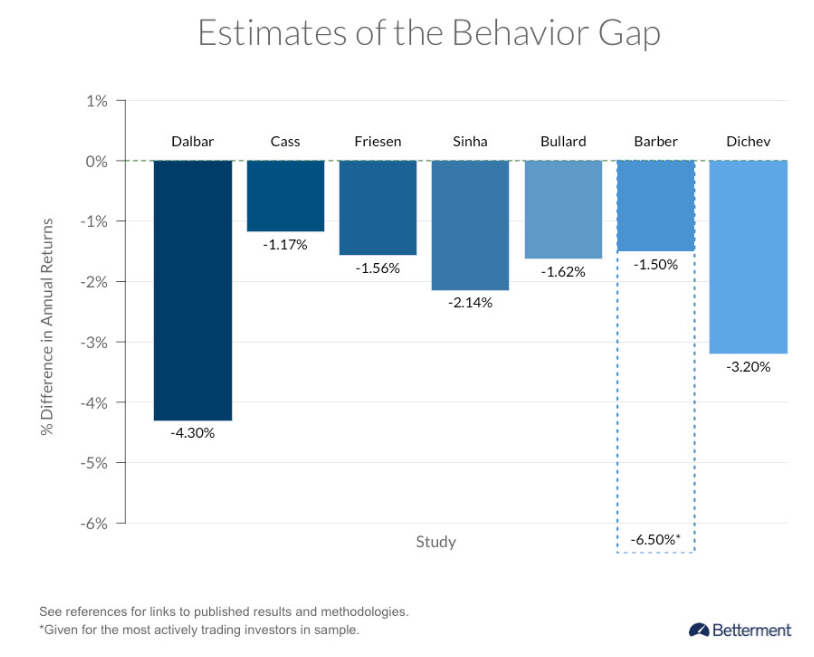Paul Tudor Jones is one of the greatest traders of our time. So when he says don’t average losers (don’t add to a losing position) you should listen, right?
Wrong.
What you really shouldn’t do is trade at all. Why? To put it bluntly: because you’re not likely to be the next Paul Tudor Jones. No one is.
Most traders fail. I don’t say that capriciously; it’s backed up by every study ever done on the subject.
Brad Barber and Terrance Odean analyzed more than 66,000 households with accounts at large discount broker during the 1990s. Their simple conclusion: “trading is hazardous to your wealth.”
What’s also hazardous to your wealth is buying high and selling low, with the negative impact on returns known as the “behavior gap” (coined by advisor Carl Richards). Estimates of the size of the gap vary – but suffice it to say – investors are often their own worst enemy.

Source: Betterment
Is there an alternative? Yes. Forget being the next Tudor Jones and stop trading your investing portfolio with emotion. Learn to be happy with simple, boring asset allocation. That means sticking to a plan/process through thick and thin and, wait for it … averaging your losers.
Blasphemy for traders, I know, but as an investor averaging your losers is simple math. Let’s run through an example to make this point clearer.
If you invested in the S&P 500 at the start of each year and held for 15 years, you would have had a 98.7% chance of a positive return historically (going back to 1928).

What was the one negative 15-year period? 1929-1943, with an annualized return of -0.2%. Within this period we saw the Great Depression and the worst bear market in history.
Lump Sum vs. Dollar-Cost Averaging
Now, we often talk about returns with the assumption of a lump sum investment on Day 1 (for example, the first day of trading in 1929). It’s easier to calculate this way and we like easy.













Leave A Comment